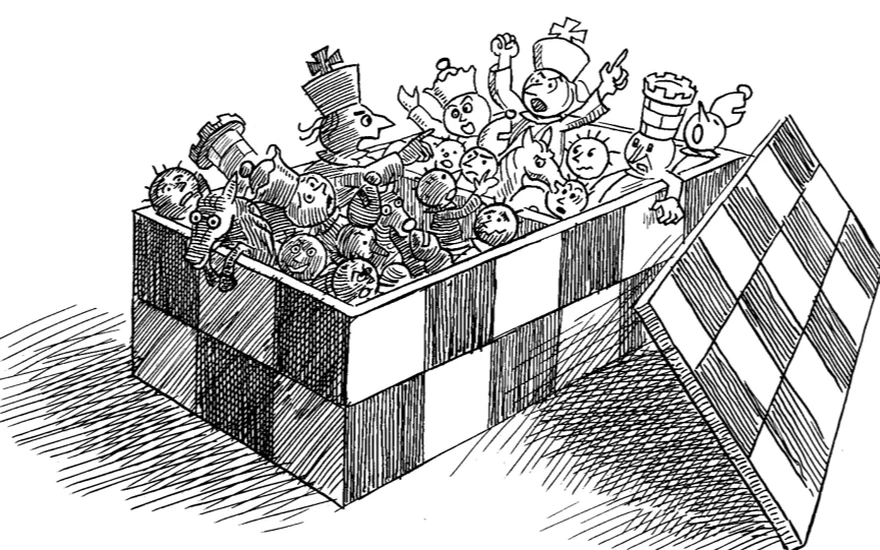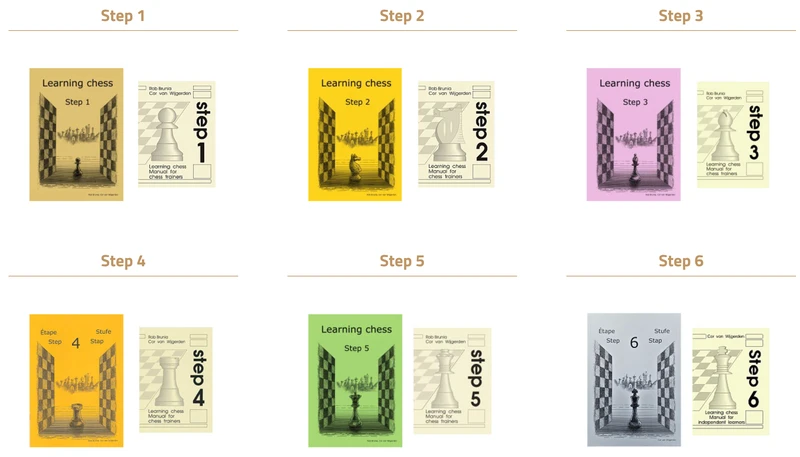
The Steps Method for learning and teaching chess
A comprehensive chess curriculum for novice to master rooted in strong didactic principlesThe Steps Method was developed in 1987 by Rob Brunia and IM Cor van Wijgerden.
Rob Brunia was a pedagogue specialising in the development of highly gifted children. I worked with Rob Brunia in Rotterdam while doing my master's in Operations Research in the 80's. Rob died too young, at the age of 57, as a result of a brain haemorrhage.
IM Cor van Wijgerden also has a background in education but devoted most of his life to chess. He was the national coach of the Dutch women's and youth teams. His most well-known students include GM Loek van Wely and GM Erwin L'Ami.
The Steps Method is the official method of the Royal Dutch Chess Federation, is widely used throughout Europe, and is gaining popularity in the United States.
Given the background of the two developers of the method, it will not surprise that the child's development is the starting point of the method. It is rooted in strong didactic principles. This curriculum follows the material-spatial-time development of a child; lessons are structured in small building blocks and are based on concentric learning (explicitly checking required prior knowledge). Playing and analyzing games are integral to the method and necessary for knowledge transfer (going from knowing to understanding to applying). The Steps Method describes how to analyze the games of children best.
The whole curriculum consists of 6 manuals, specifically for chess trainers (and parents), and 26 workbooks for the students. The exercises in the workbooks are categorized by subject. A typical page has a title indicating the theme and 12 exercises. The manuals contain complete scripted lessons for the teacher and aids that address children's learning stages and development. There are, in total, over 14,000 exercises in the 26 workbooks. This allows a trainer to differentiate their training between weaker and stronger students easily.
The complete course takes you from novice to national master level. In Step 1, the student learns the rules of the game and the basics of mate, capturing, and defending. Step 6, the first self-study step, continues with training on attacking the king, tactics, and endgames but has more lessons on positional aspects of the game (increasing piece activity / reducing vulnerabilities) and opening preparation. Many IMs and FMs use Step 6 as preparation for a tournament to sharpen their chess skills again.
To better understand the method, you can download material from each step here: Steps Method Examples.
The Steps Method is a comprehensive method for learning and teaching chess. It helps school teachers to be good chess teachers by providing a well-structured chess curriculum. It enables strong players like IMs and GMs to be better teachers by giving a chess teaching method rooted in strong didactic principles. It helps chess program directors to have a proven uniform teaching method across teachers. For them, the Steps Method is a way to ensure quality assurance across their entire program.
In 1992, I became a certified Steps Method trainer. For that exam, I created an overview of all the chess concepts across the Steps. Since 2017, I have been teaching again and recently started a YouTube channel where I share the concepts in Steps Method. These videos can be helpful for adults who use the Steps Method for self-study, begin in Step 4 and are afraid they missed concepts of Step 1-3.
In 2019, the US Chess Federation asked me to give a presentation on the Steps Method at the US National Chess Open in Orlando. This presentation was developed in cooperation with Cor van Wijgerden, and I also presented it afterwards on YouTube.
If you like this blog, then please follow me on YouTube.
You may also like
 GM Avetik_ChessMood
GM Avetik_ChessMood10 Things to Give Up to Enjoy Chess Fully
Discover how embracing a lighter mindset can help you enjoy chess again and achieve better results. CM HanSchut
CM HanSchutPosition Search in the Forward Chess library
Searching for positions in books you own and do not own is now possible CM HGabor
CM HGaborEffective training methods - doing tactics
My previous post was about chess training in general. We will dive into the details now. So, what yo… ebk1976
ebk1976Aging in Chess
The age too old for gold. CM HanSchut
CM HanSchutGenerate a complete opening repertoire with just a few mouse clicks
Qchess.net winrate repertoire generator is a game changer CM HGabor
CM HGabor